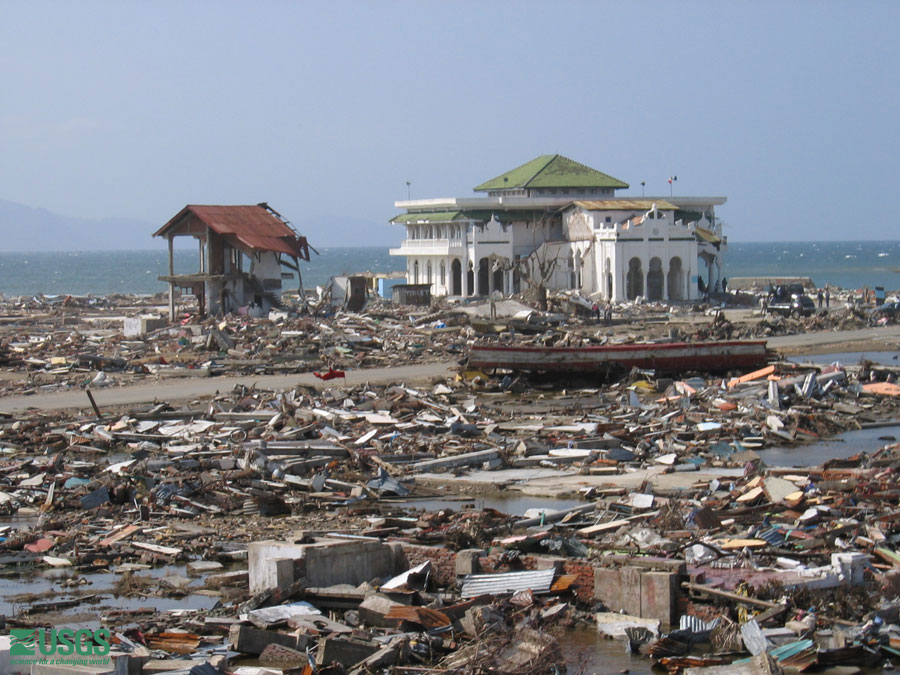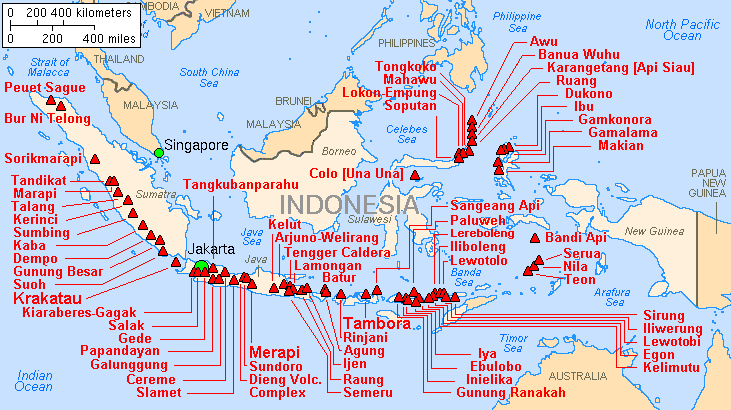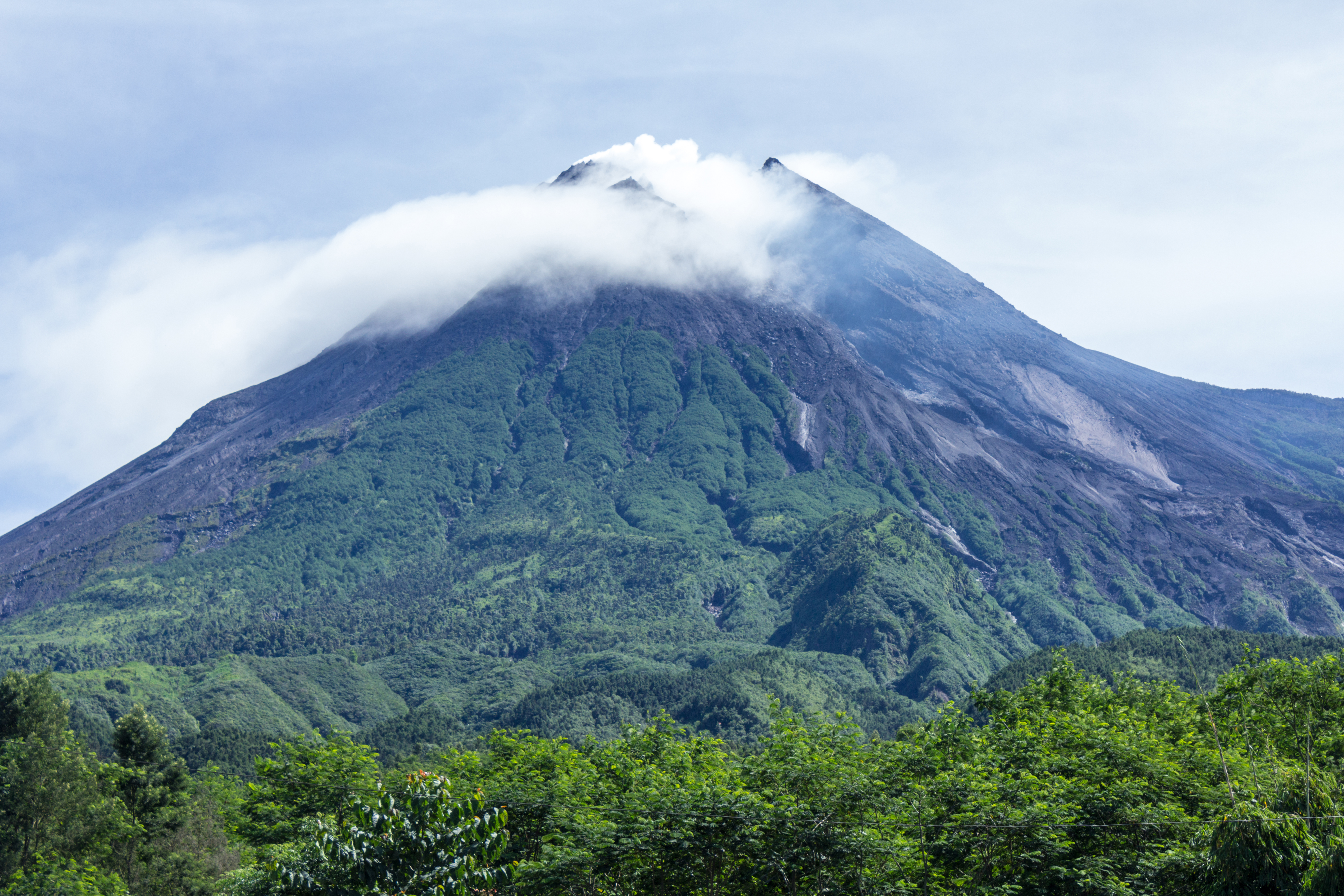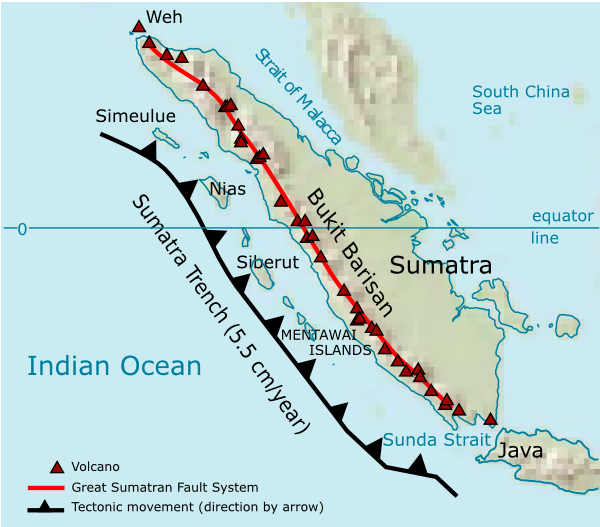sunda arc on:
[Wikipedia]
[Google]
[Amazon]
 The Sunda Arc is a
The Sunda Arc is a

 The main-arc volcanism along Sunda is mainly derived from the interaction between the
The main-arc volcanism along Sunda is mainly derived from the interaction between the



 The Sunda Arc is a
The Sunda Arc is a volcanic arc
A volcanic arc (also known as a magmatic arc) is a belt of volcanoes formed above a subducting oceanic tectonic plate,
with the belt arranged in an arc shape as seen from above. Volcanic arcs typically parallel an oceanic trench, with the arc lo ...
that produced the volcanoes that form the topographic spine of the islands of Sumatra, Nusa Tenggara
The Lesser Sunda Islands or nowadays known as Nusa Tenggara Islands ( id, Kepulauan Nusa Tenggara, formerly ) are an archipelago in Maritime Southeast Asia, north of Australia. Together with the Greater Sunda Islands to the west they make up t ...
, and Java
Java (; id, Jawa, ; jv, ꦗꦮ; su, ) is one of the Greater Sunda Islands in Indonesia. It is bordered by the Indian Ocean to the south and the Java Sea to the north. With a population of 151.6 million people, Java is the world's mos ...
, the Sunda Strait and the Lesser Sunda Islands. The Sunda Arc begins at Sumatra and ends at Flores, and is adjacent to the Banda Arc
The Banda Arc (main arc, Inner, and Outer) is a set of island arcs in eastern Indonesia. It is the result of the collision of a continent and an intra-oceanic island arc. The presently active arc is located on what appears to be oceanic crust whe ...
. The Sunda Arc is formed via the subduction of the Indo-Australian Plate
The Indo-Australian Plate is a major tectonic plate that includes the continent of Australia and the surrounding ocean and extends northwest to include the Indian subcontinent and the adjacent waters. It was formed by the fusion of the Indian an ...
beneath the Sunda and Burma plates at a velocity of 63–70 mm/year.
Formation and geologic setting
Mid-oceanic ridge basalts (MORB) form most of the oceanic basin south of Sunda, according to geodynamic studies. These plates began to converge in the EarlyMiocene
The Miocene ( ) is the first epoch (geology), geological epoch of the Neogene Period and extends from about (Ma). The Miocene was named by Scottish geologist Charles Lyell; the name comes from the Greek words (', "less") and (', "new") and mea ...
. The Indo-Australian Plate
The Indo-Australian Plate is a major tectonic plate that includes the continent of Australia and the surrounding ocean and extends northwest to include the Indian subcontinent and the adjacent waters. It was formed by the fusion of the Indian an ...
is subducting beneath the Eurasian Plate
The Eurasian Plate is a tectonic plate that includes most of the continent of Eurasia (a landmass consisting of the traditional continents of Europe and Asia), with the notable exceptions of the Indian subcontinent, the Arabian subcontinent and ...
with the dip angle of 49-56 degrees. The slab subducting under Java is continuous down to the lower mantle. However, the slab appears to beak apart under Sumatra Island
Sumatra is one of the Sunda Islands of western Indonesia. It is the largest island that is fully within Indonesian territory, as well as the sixth-largest island in the world at 473,481 km2 (182,812 mi.2), not including adjacent is ...
''.'' Earthquake depth records indicate that there is no deep seismic activity in Sumatra, likely due to the age of the subducting complex''.''. Two types of subductions have been identified along the Sunda Arc: 1) orthogonal subduction along Java and 2) oblique subduction on the Sumatra side. These subductions are separated by the Sunda Strait.
Notable seismic events
With the ongoing magmatic activities and the nature of the subduction zone, Sunda Arc experiences major seismic events throughout history. These events cost the loss of lives and vast destruction along the coast. These are some major seismic events that have been recorded.
Tsunami on December 2004, Indian Ocean
In 2004, the tsunami in Indian Ocean was triggered by an earthquake of 9.15 magnitude near Sumatra Island. In Banda Aceh area, thetsunami
A tsunami ( ; from ja, 津波, lit=harbour wave, ) is a series of waves in a water body caused by the displacement of a large volume of water, generally in an ocean or a large lake. Earthquakes, volcanic eruptions and other underwater exp ...
height reached up to 35 meters, which surpassed value recorded prior to this event.
Tsunami on July 2006, West Java and Central Java, Indonesia
A devastating event occurred on July 17, 2006, with major destruction along West Java and Central Java. The Mw-7.7 earthquake-induced tsunami struck over 250 km of the coastline and cost more than 600 deaths. The approximate run-up height was about 4–6 meters.Historic eruptions and arc volcanism
The Sunda Arc is home to some of the world's most dangerous and explosive volcanoes. The1815 eruption of Mount Tambora
Mount Tambora is a volcano on the island of Sumbawa in present-day Indonesia, then part of the Dutch East Indies, and its 1815 eruption was the most powerful volcanic eruption in recorded human history. This volcanic explosivity index (VEI) 7 ...
on Sumbawa
Sumbawa is an Indonesian island, located in the middle of the Lesser Sunda Islands chain, with Lombok to the west, Flores to the east, and Sumba further to the southeast. Along with Lombok, it forms the province of West Nusa Tenggara, but th ...
and the 1257 eruption of Mount Samalas
Segara Anak is a crater lake in the caldera that formed during the explosive volcanic eruption of Mount Samalas in 1257. The caldera is next to Mount Rinjani on Lombok Island in Indonesia. "Segara Anak" means "child of the sea" and refers to the ...
on Lombok
Lombok is an island in West Nusa Tenggara province, Indonesia. It forms part of the chain of the Lesser Sunda Islands, with the Lombok Strait separating it from Bali to the west and the Alas Strait between it and Sumbawa to the east. It is ...
were among the largest in the last two millennia, ranking 7 on the VEI scale. The Sunda Arc subduction zone was also the site of one of the largest known eruptions of the Cenozoic, the VEI 8 Toba supereruption on Sumatra, which expelled 2,800 km³ of magma c. 74,000 BP. The resulting caldera has become Lake Toba
Lake Toba ( id, Danau Toba) ( Toba Batak: ᯖᯀᯬ ᯖᯬᯅ; romanized: ''Tao Toba'') is a large natural lake in North Sumatra, Indonesia, occupying the caldera of a supervolcano. The lake is located in the middle of the northern part of the i ...
. The loudest noise in recorded history
Recorded history or written history describes the historical events that have been recorded in a written form or other documented communication which are subsequently evaluated by historians using the historical method. For broader world his ...
occurred during the 1883 eruption of Krakatoa and was heard away. Hundreds of thousands of people have been killed by these eruptions and by episodes of activity at other volcanoes, including Papandayan
Mount Papandayan is a complex stratovolcano, located in Garut Regency, to the southeast of the city of Bandung in West Java, Indonesia. It is about to the southwest of the town of Garut. At the summit, there are four large craters which cont ...
, Galunggung
Mount Galunggung (Indonesian: ''Gunung Galunggung'', formerly spelled ''Galoen-gong'') is an active stratovolcano in West Java, Indonesia, around southeast of the West Java provincial capital, Bandung (or around to the east of the West Java t ...
, Merapi, Kelud
The Kelud ( jv, ꦏꦼꦭꦸꦢ꧀, Kelud, sometimes spelled as ''Klut'', ''Cloot'', ''Kloet'', ''Kloete'', ''Keloed'' or ''Kelut'') is an active stratovolcano located in Kediri, East Java, Indonesia. Like many Indonesian volcanoes and others on ...
, Sinabung and Agung
The agung is a set of two wide-rimmed, vertically suspended gongs used by the Maguindanao, Maranao, Sama-Bajau and Tausug people of the Philippines as a supportive instrument in kulintang ensembles. The agung is also ubiquitous among othe ...
.
Main-arc volcanism
 The main-arc volcanism along Sunda is mainly derived from the interaction between the
The main-arc volcanism along Sunda is mainly derived from the interaction between the Indo-Australian Plate
The Indo-Australian Plate is a major tectonic plate that includes the continent of Australia and the surrounding ocean and extends northwest to include the Indian subcontinent and the adjacent waters. It was formed by the fusion of the Indian an ...
and the Eurasia Plate
The Eurasian Plate is a tectonic plate that includes most of the continent of Eurasia (a landmass consisting of the traditional continents of Europe and Asia), with the notable exceptions of the Indian subcontinent, the Arabian subcontinent and ...
. Magma originates from partial melting of the mantle wedge driven by the fluids from subducting slab. In addition, volcanic rocks from Quaternary generally show more enrichment in alkaline contents than those from Tertiary
Tertiary ( ) is a widely used but obsolete term for the geologic period from 66 million to 2.6 million years ago.
The period began with the demise of the non-avian dinosaurs in the Cretaceous–Paleogene extinction event, at the start ...
age. The majority of basalts of the arc have calc-alkaline
The calc-alkaline magma series is one of two main subdivisions of the subalkaline magma series, the other subalkaline magma series being the tholeiitic series. A magma series is a series of compositions that describes the evolution of a mafic m ...
contents, except for some potassic lava production in East Java.
Back-arc volcanism
The magmatic activities along the back-arc may or may not relate to the main-arc materials. Magma and lava appear to have originated from molten materials at a deeper part of the mantle as supported by a higher K2O/Na2O ratio in comparison to other part of Sunda Arc. Most salient volcanoes in back-arc region are Lasem, Muria, andBawean
Bawean ( id, Pulau Bawean) is an island of Indonesia located approximately north of Surabaya in the Java Sea, off the coast of Java. It is administered by Gresik Regency of East Java province. It is approximately in diameter and is circumnav ...
in which their volcanic rocks show complex patterns in terms of chemical signature.
Major islands
Java
Java Island
Java (; id, Jawa, ; jv, ꦗꦮ; su, ) is one of the Greater Sunda Islands in Indonesia. It is bordered by the Indian Ocean to the south and the Java Sea to the north. With a population of 151.6 million people, Java is the world's most ...
is located on the east side of Sunda Arc, residing between Sumatra and Bali. Its oceanic crust's thickness is approximately 20-25 kilometers. With the geological activities and the tectonic nature of Sunda Arc, megathrust earthquakes and volcanic activities are ubiquitous at Java island. Modern volcanoes at Java are formed during Tertiary with typical products of andesitic
Andesite () is a volcanic rock of intermediate composition. In a general sense, it is the intermediate type between silica-poor basalt and silica-rich rhyolite. It is fine-grained (aphanitic) to porphyritic in texture, and is composed predomin ...
composition and progressively get more alkali content during Quaternary. Along the Java island, there are approximately 62 geothermal fields which can be utilized for further usages including producing electricity. Java is also a germinal center for supplying gold and cooper in which the occurrences of these low-sulfidication (LS) epithermal deposits may associate with magmatic arc activities with the spatial relationship between the akaditic magma and porphyry Cu-Au deposits.
East Java
Most volcanic activity in East Java is Plinian-type, which is very explosive and emits columns of hot volcanic debris. The adiakitic magma, which deviates from usual island-arc magma, is associated with porphyry deposits. There is evidence that the Ringgit-Beser volcanic complex also produces potassic and magnesian lava, which could be a result of the decreasing influence of subduction-related material. A major volcano in East Java isMount Bromo
The Bromo ( jv, ꦧꦿꦩ), or Mount Bromo ( jv, ꦒꦸꦤꦸꦁꦧꦿꦩ Pegon: , Gunung Bromo) is an active somma volcano and part of the Tengger mountains, in East Java, Indonesia. At it is not the highest peak of the massif, but th ...
.

Central Java
There exist two main arcs at Central Java which are Southern Mountain Arc (SMA) and Modern Volcanic Arc (MVA) which give rise to frequent volcanic activities. Prior studies suggested that SMA is formed during Middle Eocene, followed by the subduction that resulted in the formation of MVA in Late Eocene. Central Java is home to one of the most notorious volcanoes, Merapi, as well as other major volcanoes such as Merbabu, Muria, and Slamet.Mount Merapi
Mount Merapi, ''Gunung Merapi'' (literally Fire Mountain in Indonesian and Javanese), is an active stratovolcano located on the border between the province of Central Java and the Special Region of Yogyakarta, Indonesia. It is the most acti ...
is the most active volcano in Indonesia which erupt periodically every 2–6 years and has shown perennial volcanic activities dated back roughly 2000 years ago based on carbon isotropic signatures. The earliest eruption has been approximated to be roughly 40,000 years ago. The most recent significant eruptions occurred in 1994, 2006, and 2010. Mount Merapi is a steep stratovocano situated on Central Java Island with its seismic and volcanic activities that could pose major threats to countless lives and infrastructures in its vicinity. Most recent volcanic activities are induced by the collapse of lava dome, contributing to highly explosive eruption of andesitic materials.
West Java
The volcanic activities in this region have began roughly sincePliocene
The Pliocene ( ; also Pleiocene) is the epoch in the geologic time scale that extends from 5.333 million to 2.58Pleistocene epoch
The Pleistocene ( , often referred to as the ''Ice age'') is the geological epoch that lasted from about 2,580,000 to 11,700 years ago, spanning the Earth's most recent period of repeated glaciations. Before a change was finally confirmed in ...
. There are two major volcanic zones called the volcanic front (VF) and the rear arc (RA) with different chemical imprints. The geochemical study of major and trace elements and isotopic signatures of lava have confirmed the steady-state subduction and ongoing replenishment of magma for about 10 Ma. The volcanic rocks founded on West Java are dated back to the Eocene
The Eocene ( ) Epoch is a geological epoch that lasted from about 56 to 33.9 million years ago (mya). It is the second epoch of the Paleogene Period in the modern Cenozoic Era. The name ''Eocene'' comes from the Ancient Greek (''ēṓs'', " ...
. The basement of West Java is continental lithosphere which can be inferred from crustal assimilation and contamination in volcanic rocks.
Krakatoa
The island of Anak Krakatau has grown at an average rate of five inches (13 cm) per week since the 1950s. Quiet periods of a few days have alternated with almost continuous Strombolian eruptions since 1994. In 1883 CE, tsunami were triggered by the eruption of Krakatoa with the run-up of 41 meters. The magnitude of damage reached Panama, which was located almost 19,300 km away from the focus.
Sumatra
Sumatra island
Sumatra is one of the Sunda Islands of western Indonesia. It is the largest island that is fully within Indonesian territory, as well as the sixth-largest island in the world at 473,481 km2 (182,812 mi.2), not including adjacent is ...
is located on the southwest side of Sunda Arc. The main seismic zone of Sumatra is the Sumatra Fault System (SFS), which trends NW-SE. The subducting oceanic crust are dated to be approximately 50 to 90 Ma. A K/Ar study reveals that subducted-related magmatism in Sumatra started roughly in early Mesozoic
The Mesozoic Era ( ), also called the Age of Reptiles, the Age of Conifers, and colloquially as the Age of the Dinosaurs is the second-to-last era of Earth's geological history, lasting from about , comprising the Triassic, Jurassic and Cretace ...
according to the evidences derived from the plutonic body on Barisan Mountain. The key mineralization found on Sumatra are epithermal veins of Au, Ag, Zn, Pb, and other metals in which these ore bodies are correlated to arc volcanism and subvolcanism intrusive bodies.
Mount Sinabung
Mount Sinabung ( Indonesian: ''Gunung Sinabung'', Karo: ''Deleng Sinabung'') is a Pleistocene-to-Holocene stratovolcano of andesite and dacite in the Karo plateau of Karo Regency, North Sumatra, Indonesia, from the Lake Toba supervolcano. M ...
is a stratovolcano of andesite and dacite in the Karo plateau of North Sumatra, 40 kilometres (25 mi) from the Lake Toba supervolcano. It has been continuously active since 2013.
Nusa Tenggara
Nusa Tenggara
The Lesser Sunda Islands or nowadays known as Nusa Tenggara Islands ( id, Kepulauan Nusa Tenggara, formerly ) are an archipelago in Maritime Southeast Asia, north of Australia. Together with the Greater Sunda Islands to the west they make up t ...
lies at the east side of Sunda. The information and study on this island are scarce compared to Java due to the difficulty of access. Generally, the island is composed on Quaternary volcanic deposits. Major volcanoes in Nusa Tenggara are Kelimutu
Kelimutu (pronounced ) is a volcano, close to the small town of Moni in central Flores island in Indonesia. It is around to the east of Ende, Indonesia, the capital of Ende regency in East Nusa Tenggara province. It has three volcanic crater la ...
and Mount Rinjani
Mount Rinjani ( id, Gunung Rinjani) is an active volcano in Indonesia on the island of Lombok. Administratively the mountain is in the Regency of North Lombok, West Nusa Tenggara ( Indonesian: ''Nusa Tenggara Barat'', NTB). It rises to , makin ...
. Seismic studies have shown clusters of seismic events beneath active island-arc volcanoes, which may be a result from the collision zone.
See also
*List of volcanoes in Indonesia
The geography of Indonesia is dominated by volcanoes that are formed due to subduction zones between the Eurasian plate and the Indo-Australian plate. Some of the volcanoes are notable for their eruptions, for instance, Krakatoa for its globa ...
References
{{ReflistFurther reading
* Newcomb KR & McCann WR. (1987). ''Seismic history and seismotectonics of the Sunda Arc''. Journal of Geophysical Research; 92:421–439. Arcs of Indonesia Volcanic arcs *x *x Geology of Indonesia Plate tectonics